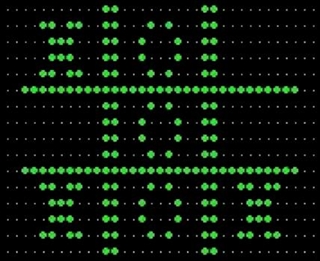 Noughts and Crosses is a video game created by Sandy Douglas in 1952.
Noughts and Crosses is a video game created by Sandy Douglas in 1952.The study and research of AI (Artificial Intelligence) goes back thousands of years.
(1) With depictions of golden gods and mechanical animals like the Greek Hephaestus.
(2) These machines, widely misunderstood, would help transform science fiction into mathematical breakthroughs giving rise to the first computers, which would consequentially give rise to major breakthroughs in the research of AI.
After the first modern electronic computers were built during the end Second World War the study of AI became widely influenced by one Dr. Allen Turing.
(3) He proposed that if a machine could show intelligent behavior equivalent to a human, that the machine can essentially think for it's own.
(4) So if a computer could carry on a conversation electronically, and be understood by another human, then it was reasonable to say that the machine could be "thinking". This would be later dubbed 'The Turing Test'.
(5)(6)
Computers were now solving complex math problems, and even learning to speak, developing almost intelligent behavior. This took the approach to creating thinking machines in a new direction. Researchers now predicted that a fully intelligent machine would be built in less than twenty years. A few scientists recognized what was happening and held an eight week long conference at Dartmouth College.
(7) They were the first to describe, what later researchers would call, a neural network.
(8) This was widely considered the birth of AI.
(9)
Breakthroughs in communication and technology were now being made worldwide
(10) which seemed to be offering sufficient progress to the study and research of Artificial Intelligence.
(11)(12) What use to take a room full of electrical components to make up a single computer was now being reduced to the size of a footlocker and even smaller.
(13). Many complex video games and machines
(14) were being used and put against real life opponents only to win like the chess program Chinook
(15) that competed in tournament standards and won. And the super computer WATSON
(16) that nearly won a contest on a television broadcast.
Even with the breakthroughs in the study of Artificial Intelligence it eventually became obvious to researchers that they had widely misunderstood the scope of AI.
(17) The technological vision was abruptly halted due to the reality of the tech industry.
(18) There was little progress over the years due to funding issues.
(19) And it became apparent to researchers that they had only scratched the surface of what was really needed to create a machine that thought for itself. What now seemed like science, was becoming more seemingly like science fiction, like the misconception of the artificial intelligence robot that was granted citizenship.
(20) Illusions and deceptions like these are proof of the progress that we have only made.